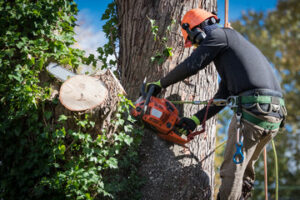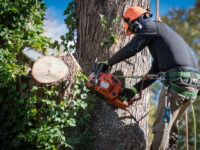Tree Removal on Private Property Requires a Permit
Tree Removal on private property requires a permit. There are also safety issues involved. Trees are dangerous and can strike electrical wires or other buildings. The best way to remove a tree is to move it to a safe location. However, removing a tree without a permit can be costly. To avoid these hazards, contact a professional to help you.

Tree removal on private property is not regulated by the state. In fact, the city does not have any special rules regarding the removal of private property trees. As a result, the responsibility for the removal of trees falls on the property owner. However, if the tree is a hazard or becomes a nuisance, the city may require the property owner to remove it.
In some cities, a permit is required for tree removal on private property. In some cities, such as Sacramento, this requirement does not apply or is not required unless the tree is a heritage or endangered species. Other cities may have more stringent regulations.
There are also special tree removal rules in some areas of the city. For instance, in certain wetlands and woodlands, homeowners must obtain authorization from the city before removing a tree. Moreover, in some areas, homeowners must obtain a certificate from an arborist if they plan to remove a tree on their property.
A permit for tree removal is required if the tree is hazardous or has been deemed to pose a danger to property. This permit must also be accompanied by liability insurance and a compliance agreement. Furthermore, the new regulations remove the requirement to replant the tree. Therefore, homeowners are now allowed to remove potentially dangerous trees on their property. This change does not apply to healthy trees.
Private property tree regulations are closely related to land development. Tree ordinances are often related to land development and may include requirements for tree removal permits. These permits are meant to give property owners an opportunity to discuss the health of their trees and their risk to the public. Furthermore, they also allow private property owners to learn about their trees’ condition and the proper maintenance procedures.
Regulations for tree removal on private property vary from one state to another. For example, the Forestry Division has issued a manual for tree owners to learn more about removing trees. However, it does not mention the special requirements that are required by the state and municipal codes.
The cost of tree removal depends on the type of tree that needs to be removed and its size. The cost can be between $200 and $1,500 for a small, mature tree. Medium-sized trees will cost between $600 and $1,000 to remove. Larger trees will cost between $1,500 and $3,500 to remove.
A tree’s diameter is another factor that will determine its price. A larger diameter tree will require more effort and time to cut down. It will also require more machinery for the job. Similarly, a smaller diameter tree will cost less since it will require fewer hours and fewer workers. This makes it an ideal choice for small properties.
A large tree typically has a wider trunk, which makes it more difficult to cut down and remove. Large trees are priced higher than small ones because they require large equipment and more material to dispose of. However, prices can vary by location and tree size. Some cities require permits for tree removal. Others require special approval to cut down trees that are native to the area. Additionally, the removal of protected trees can cost more.
The cost to remove a large tree is typically more than $1,500. While there are situations when the cost can be much lower, most companies will charge more for large trees. This is because the extra work involves extra risk for the workers. Often, this means that they will have to climb high in order to access the tree. If the tree is extremely tall, they will also need to rope down sections of it.
The cost to remove a large oak tree is more expensive than a small maple tree. The cost will also depend on the equipment that will be required to access the tree. This factor can add up to 50% to the cost of the project. Furthermore, a large oak tree is more difficult to reach than a small maple tree.






